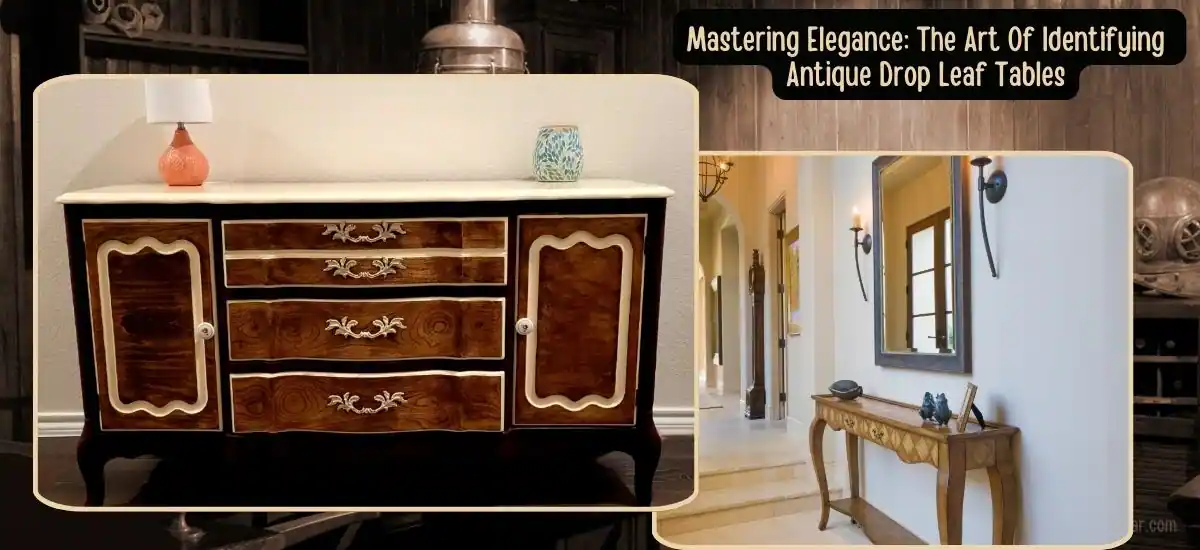Antique drop leaf tables are not just furniture; they are pieces of history. Each table tells a story, reflecting the craftsmanship and lifestyle of its era. For collectors and enthusiasts, understanding the nuances of these tables is key to identifying true antiques and appreciating their value.
The Charm Of History: Understanding Drop Leaf Tables
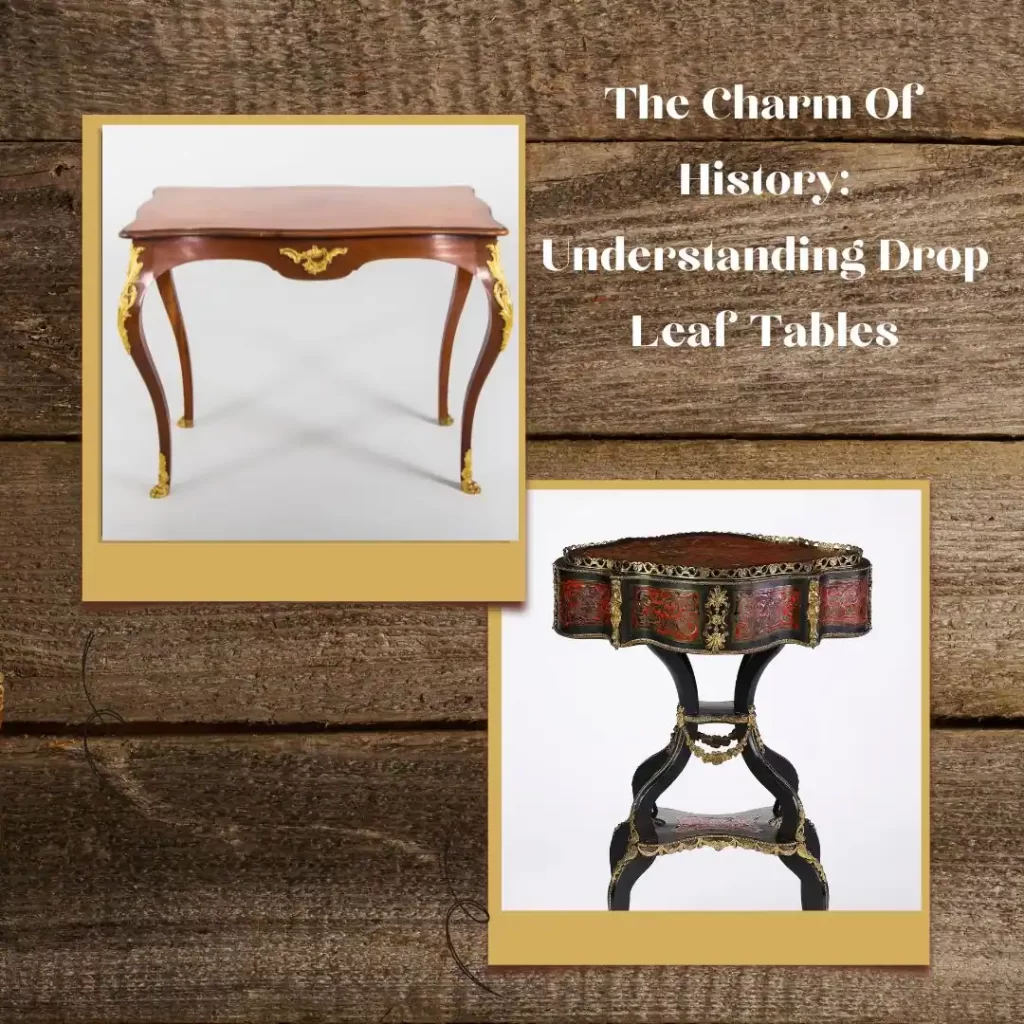
Drop leaf tables have been a staple in homes for centuries, known for their versatile design with leaves that can be dropped down or raised to adjust the table size.
Originating in England in the 16th century, these tables have seen various design evolutions, making them a fascinating subject for antique enthusiasts.
Types Of Antique Drop Leaf Table
- Gateleg Table
- Pembroke Table
- Butterfly Leaf Table
- Console Drop Leaf Table
- Duncan Phyfe Drop Leaf Table
- Swing Leg Drop Leaf Table
- Harvest Drop Leaf Table
How To Identify
1. Examine The Wood And Construction
- Wood Type: Look for solid woods like oak, mahogany, or walnut, common in older tables
- Construction: Hand-cut dovetail joints and irregular saw marks suggest an older, handcrafted piece.
2. Check The Finish
- Original Finish: Check for wear that aligns with the table’s age
- Patina: A developed patina indicates an authentic antique.
3. Check The Hardware
- Screws and Nails: Hand-forged nails and irregular screws are typical in antiques.
- Hinges: Older hinges are usually bulkier and less refined.
4. Look For Wear And Repair
- Wear Patterns: Authentic antiques show natural wear in common use areas.
- Repairs: Signs of repair can tell you about the table’s history.
5. Identify Style And Period
- Design Features: The style can hint at the table’s age (e.g., Victorian vs. Georgian).
- Legs and Feet: Designs like claw-and-ball feet are indicative of certain periods.
6. Research Provenance:
Knowing the table’s history can add to its authenticity and value.
7. Consult An Expert:
For definitive identification, seek insights from an antique dealer or appraiser.
Reason To Have An Antique Drop Leaf Table
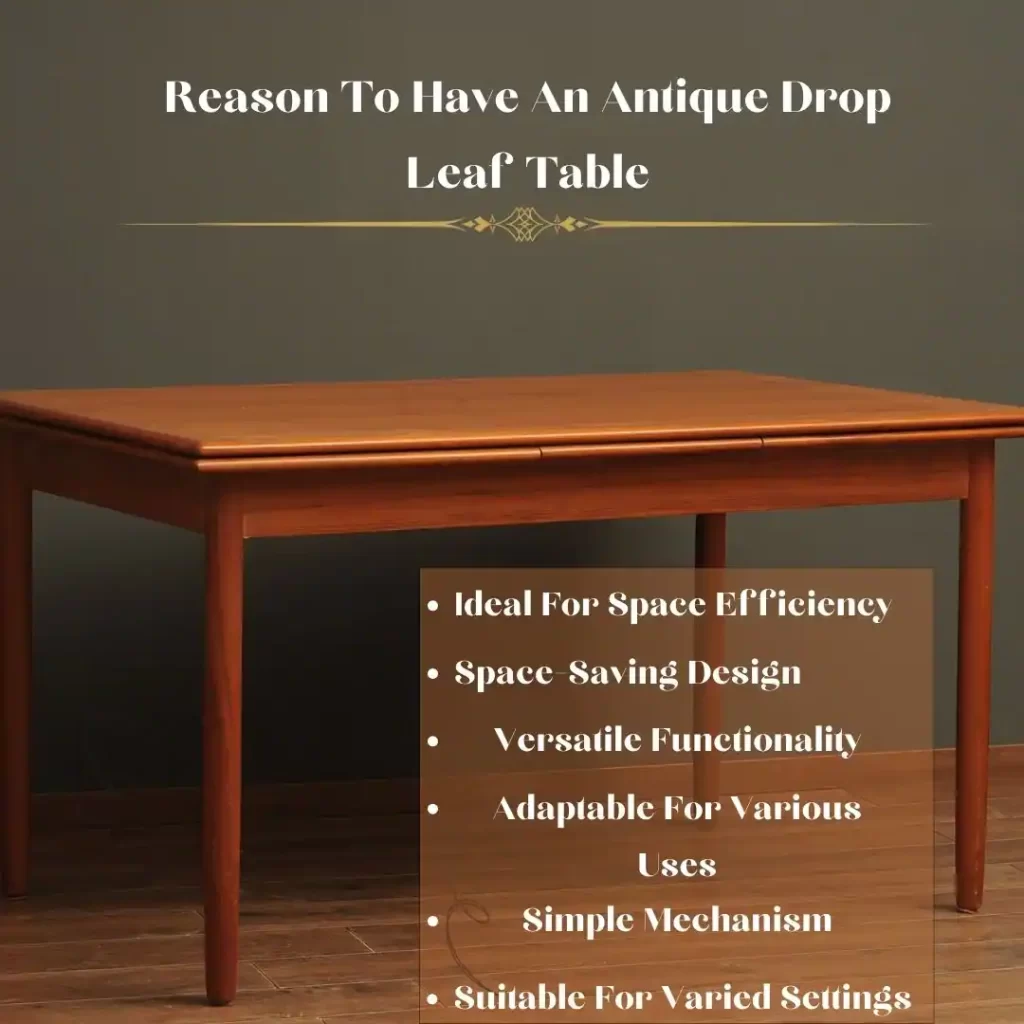
- Ideal For Space Efficiency: Drop leaf tables are perfect for small apartments, studios, or any room where space is limited.
- Space-Saving Design: The ability to fold down the leaves of the table when not in use makes these tables incredibly space-efficient.
- Versatile Functionality: These tables can easily transition from a compact console table to a larger dining or work table as needed.
- Adaptable For Various Uses: Whether it’s accommodating extra guests for dining or providing a temporary workspace, drop leaf tables are highly adaptable.
- Simple Mechanism: The straightforward mechanism of the drop leaf allows for quick and easy adjustments in size, making it user-friendly.
- Compact And Expandable: Drop leaf tables offer the convenience of being compact when folded and expansively functional when extended.
- Suitable For Varied Settings: Ideal for settings where multifunctional furniture is needed due to space constraints.
Features / Price Of Tables
| Table Type | Features and Origin | Estimated Price Range |
| Gateleg Table | Gate-like legs, 17th-century England. Ideal for small spaces. | $500 – $5,000+ |
| Pembroke Table | Drawer, oval/rectangular shape, 18th century. Named after the 9th Earl of Pembroke. | $1,000 – $10,000+ |
| Butterfly Leaf Table | Leaf folds from the center, hidden when not in use. Modern design. | $300 – $3,000+ |
| Console Drop Leaf Table | Against a wall, one or two drop leaves. Used in hallways or as accent furniture. | $400 – $4,000+ |
| Duncan Phyfe Drop Leaf Table | Elegant, curved legs (lyre shape). Early 19th century, American design. | $1,000 – $15,000+ |
| Swing Leg Drop Leaf Table | Legs swing out to support leaves. Traditional, farmhouse-style. | $600 – $6,000+ |
| Harvest Drop Leaf Table | Large, rustic, used in kitchens/dining. Originates from rural harvest meals. | $800 – $8,000+ |
How To Make An Antique Drop Leaf Table
Materials And Tools Needed
- Wood: Choose a durable wood like oak, walnut, or maple.
- Hinges: Appropriate for supporting the drop leaves.
- Saw: For cutting the wood to size.
- Screws and Nails: For assembling the pieces.
- Drill: For making holes for screws.
- Sandpaper: For smoothing the wood.
- Wood Glue: For additional bonding.
- Varnish or Paint: For finishing the table.
- Measuring Tape, Pencil, Level: For accurate measurements and alignment.
Steps To Make a Drop Leaf Table
1. Design Your Table
- Decide on the dimensions of your table, including the size of the drop leaves.
- Sketch the design, including where the hinges will go and how the support mechanism for the leaves will work.
2. Cut The Wood
- Cut the tabletop, leaves, legs, and any additional supports or aprons according to your design.
- Ensure all pieces are precisely measured and cut.
3. Assemble The Tabletop
- Join the central part of the tabletop and the drop leaves. Ensure they align perfectly.
- Sand the edges to make them smooth and even.
4. Attach The Hinges
- Attach the hinges to the underside of the drop leaves and the central tabletop.
- Ensure the leaves move smoothly and stay level with the main tabletop when extended.
5. Construct And Attach The Legs
- Build the table legs and any framework or apron that goes under the tabletop.
- Attach the legs securely to the tabletop. Make sure the table is stable and level.
6. Install Supports For The Leaves
- Install swing-out arms or brackets under the leaves to support them when they are in use.
- Ensure these supports are strong and easily fold away when not in use.
7. Finish The Table
- Sand the entire table to prepare it for finishing.
- Apply varnish, stain, or paint as desired. Let it dry completely.
8. Final Checks
- Check all joints, hinges, and supports for strength and functionality.
- Make any necessary adjustments for smooth operation.
Steps To Convert a Standard Table Into a Drop Leaf Table
Step 1: Measure Your Table
- Measure the length and width of your existing table to determine the appropriate size for the new leaves.
Step 2: Cut The Wooden Leaves
- Cut wooden boards to the dimensions determined in Step 1.
- Ensure the boards are of appropriate thickness to match your table.
Step 3: Sand The Edges
- Smooth the edges of the cut boards using sandpaper to prevent splinters and to prepare for finishing.
Step 4: Attach Hinges
- Choose sturdy hinges for the project, such as butt or piano hinges.
- Attach the hinges to the table’s edge and the new leaves.
- Ensure they are perfectly aligned so the surface is level when extended.
Step 5: Install Support Brackets Or Swing Arms
- Install support brackets or swing arms beneath the leaves.
- Ensure these supports are strong enough to hold the leaves when extended.
- The supports should fold away neatly under the table when the leaves are dropped.
Step 6: Test the Mechanism
- Test the drop leaf mechanism to ensure the leaves extend and fold down smoothly.
Step 7: Finishing Touches
- If the new leaves differ in appearance from the original table, consider staining or painting.
- Apply the finish to both the new leaves and the original table for a cohesive look.
Step 8: Final Check
- Once the paint or stain is dry, do a final check to ensure everything is functioning correctly and the table is stable.
5 Most Precious Antique Leaf table
1. Chippendale Drop Leaf Tables
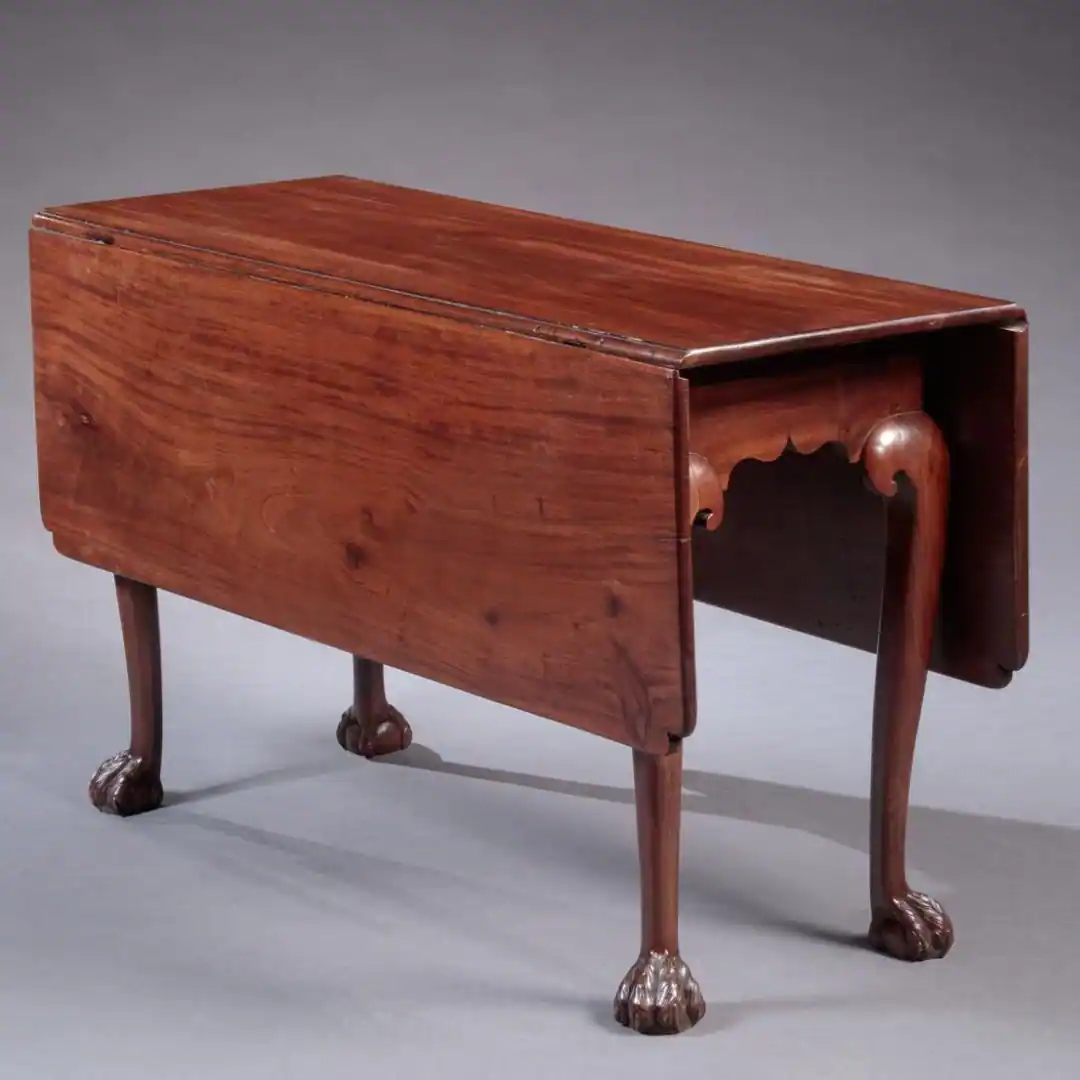
- Features: Known for intricate designs and superior craftsmanship, often made from mahogany.
- Significance: Thomas Chippendale was a celebrated 18th-century English furniture maker, and his original pieces are highly sought after.
2. Queen Anne Drop Leaf Tables
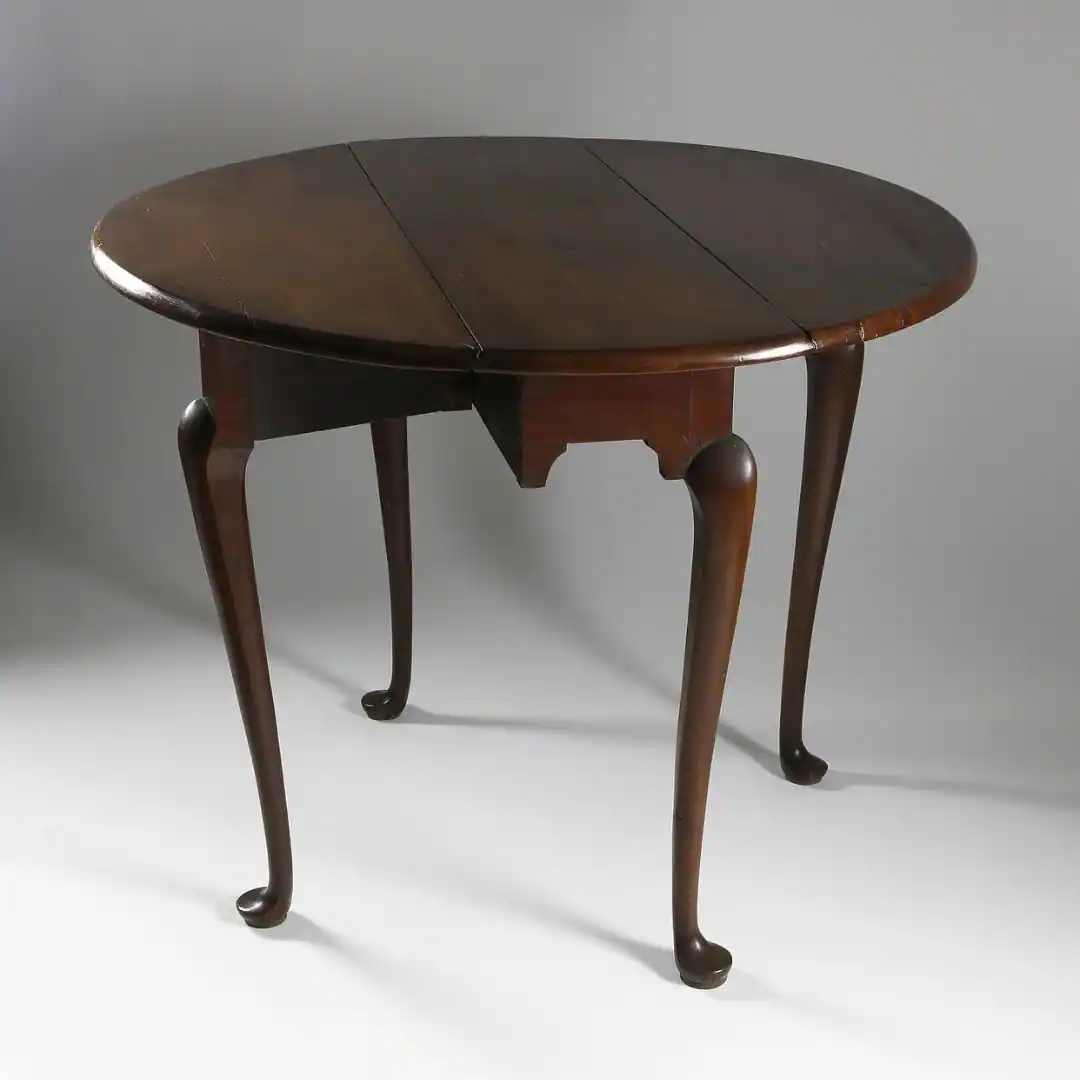
- Features: Characterized by elegant curves, cabriole legs, and often made from walnut or cherry wood.
- Significance: Reflecting the Queen Anne style of the early 18th century, these tables are prized for their graceful design and historical value.
3. Duncan Phyfe Drop Leaf Tables
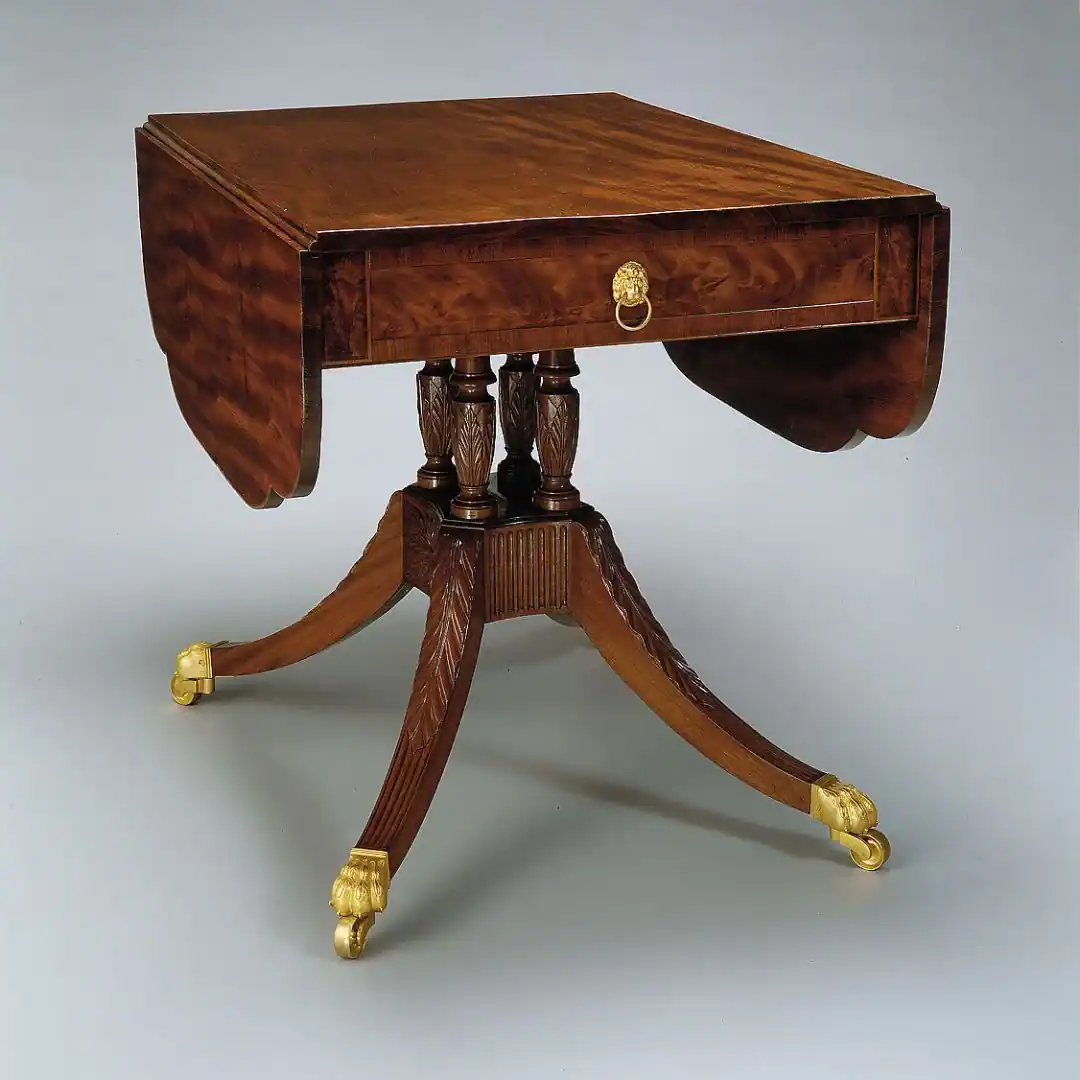
- Features: Notable for their distinct curved legs, often in a lyre shape, and elegant design.
- Significance: Duncan Phyfe, an early 19th-century American cabinetmaker, was known for his unique style that has become synonymous with quality and taste.
4. Sheraton-Style Drop Leaf Tables
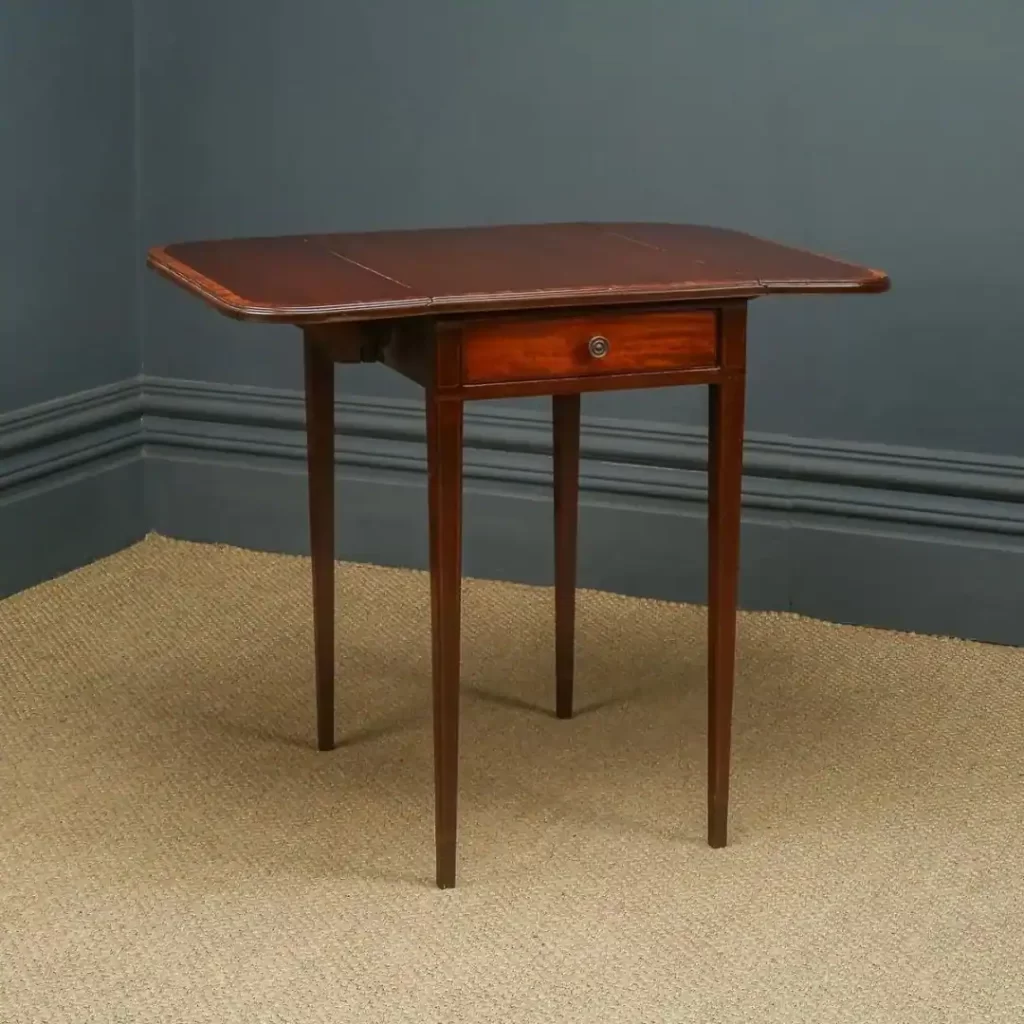
- Features: Known for straight lines, classical ornamentation, and delicate craftsmanship.
- Significance: Thomas Sheraton was an influential 18th-century English furniture designer, and tables in his style are celebrated for their elegance and refinement.
5. American Federal Period Drop Leaf Tables
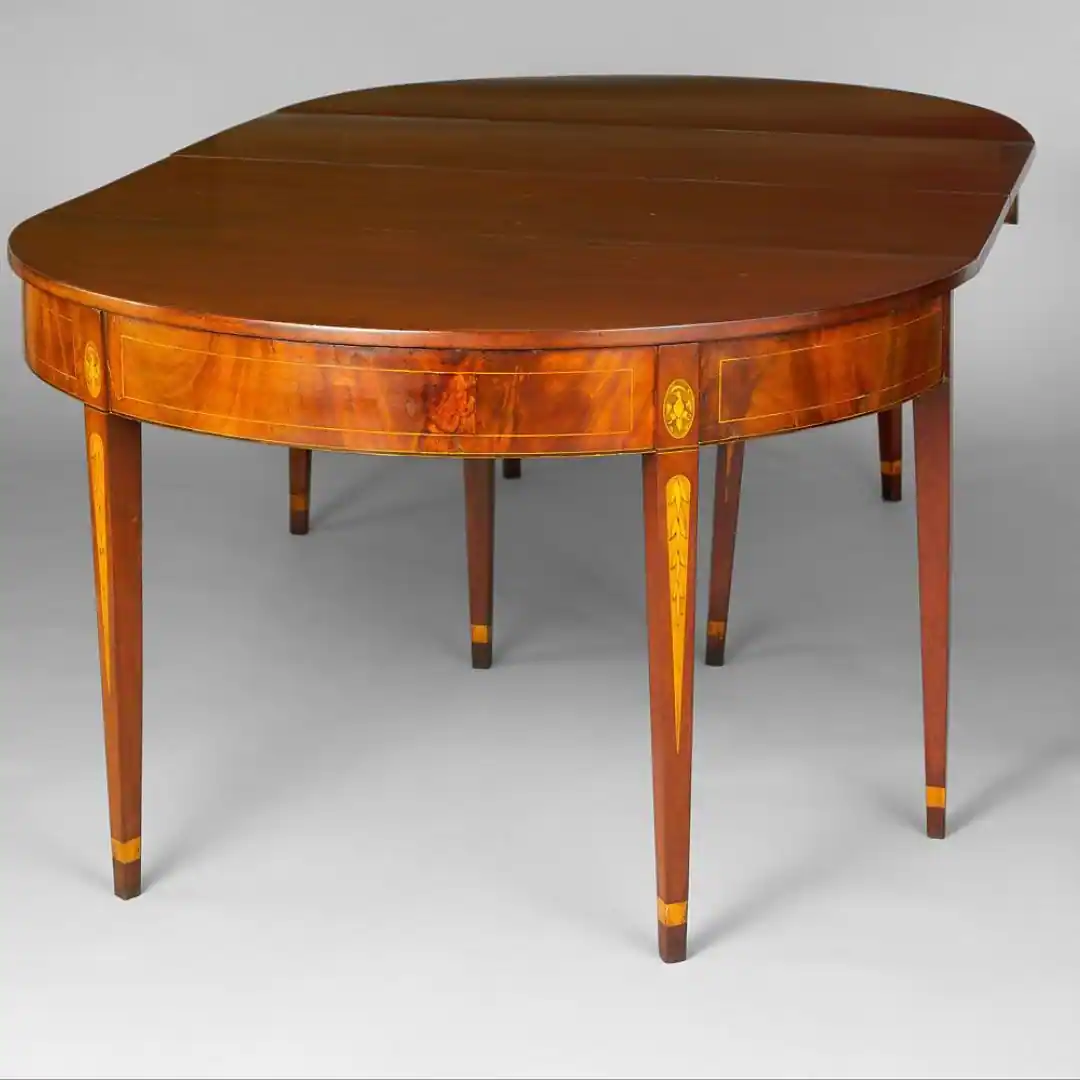
- Features: Typically feature neoclassical elements, with a focus on symmetry and balance.
- Significance: Representing the American Federal period (late 18th to early 19th century), these tables are valued for their historical significance and craftsmanship.
Frequently Asked Questions :
Q 1. Can I add drop leaves to a round table, and how does the process differ from a rectangular table?
Ans-Yes, you can add drop leaves to a round table. The process involves creating curved leaves that match the table’s curvature and ensuring the hinges and supports accommodate the round shape.
Q 2. How do I match the wood grain and finish of the new leaves to my existing table?
Ans-To match the wood grain, select wood with a similar pattern and direction. For the finish, you may need to experiment with stains or paints to find a close match. Sometimes, refinishing the entire table ensures a uniform look.
Q 3. Is it possible to add a locking mechanism to the drop leaves for added stability?
Ans-Yes, you can add locking mechanisms such as latches or sliding bolts underneath the leaves to secure them in place when extended.
Q 4. Can I integrate storage features into the drop leaf design, like drawers or shelves?
Ans-Absolutely! You can design the drop leaves with built-in storage features like shallow drawers or add shelves underneath for additional functionality.
Q 5. How do I ensure the table remains balanced and doesn’t tip over when the leaves are extended?
Ans- Ensure the table legs and base are sturdy enough to support the extended leaves. You may need to reinforce the base or legs for additional stability.

